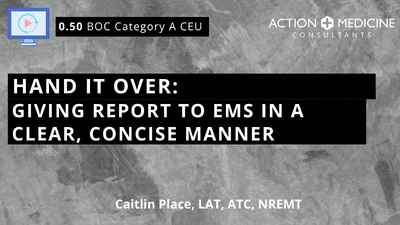AI Chat Bot
Hand It Over: Giving Report To EMS In A Clear, Concise Manner › Learning Material
Presentation (Video)
Updated Jun 7, 2024
Copyright © 2025 Action Medicine Consultants, LLC
___MESSAGE___
___MESSAGE___


